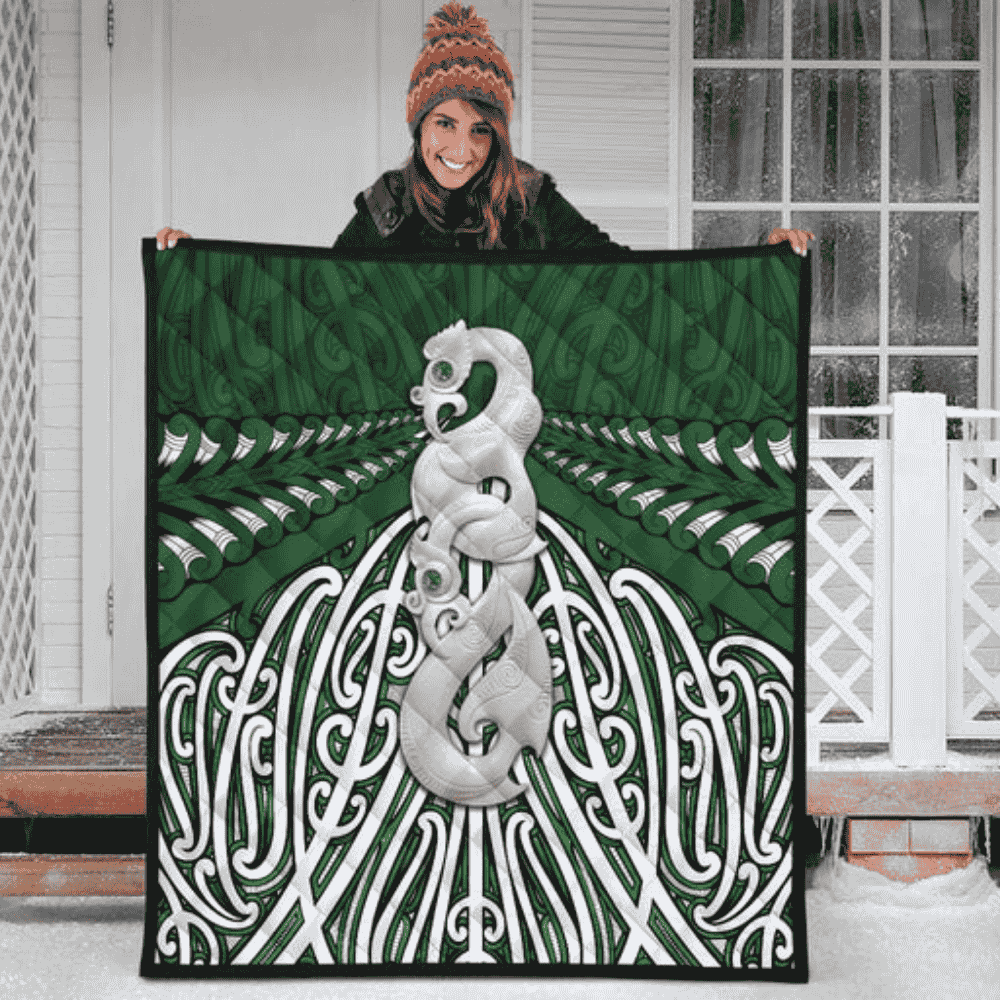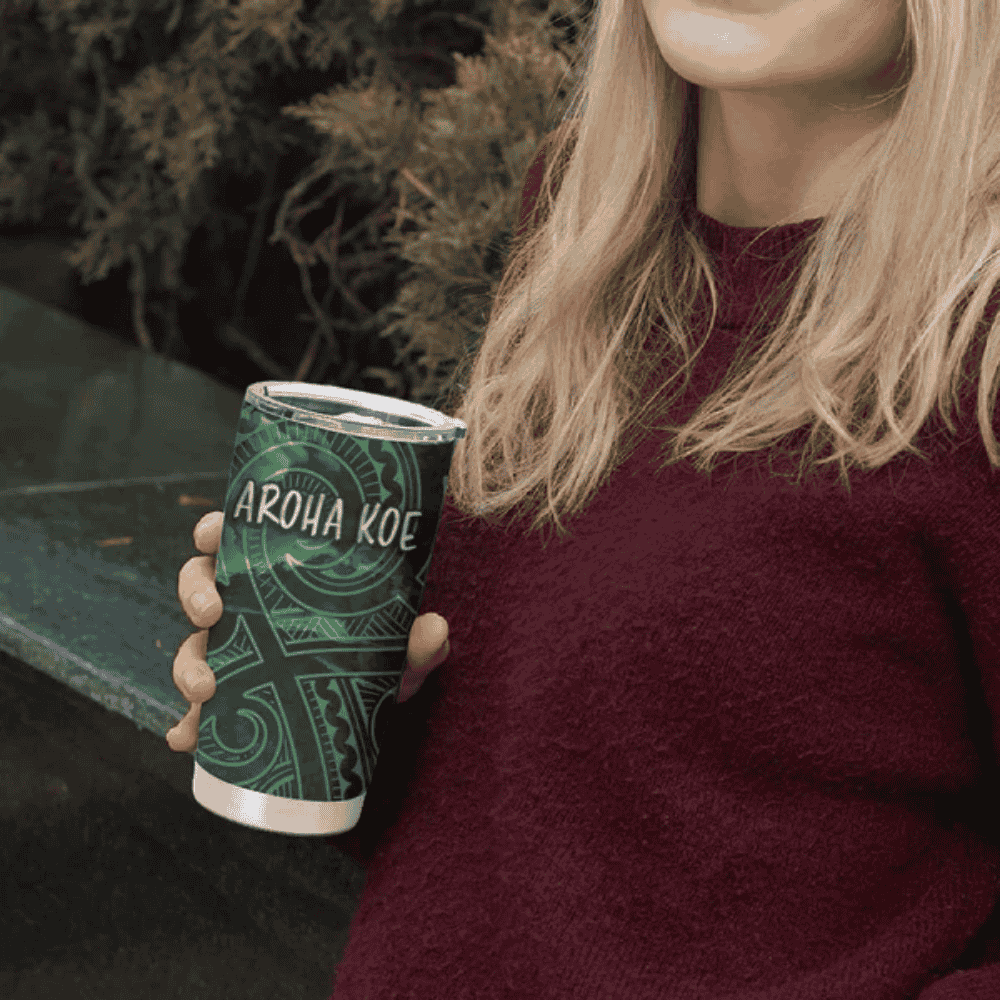Pounamu: The Living Legacy of New Zealand Greenstone

Pounamu isn’t just something you see in a museum or jewelry shop — it’s a living part of New Zealand’s story. For the Māori, it’s not just a stone. Still, it’s also a taonga (treasure) that carries stories of ancestors, spirituality, and identity. Together, let’s uncover where Pounamu comes from and giving you a deeper understanding of why Pounamu is treasured to this day.
What Makes Pounamu So Unique in New Zealand?
Pounamu is often called New Zealand greenstone or nephrite jade. Recognized as a taonga (treasure) under New Zealand law, it carries cultural, spiritual, and historical weight for the Māori.
Archaeological research shows that Māori communities have worked and valued Pounamu for at least 700 years, shaping it into tools, ornaments, and sacred symbols. These carvings, like other Iconic Maori symbols, reflect deep connections between people, ancestors, and the natural world.
Today, it is still legally protected under the Ngāi Tahu (Pounamu Vesting) Act 1997, ensuring it remains a cultural treasure rather than a commercial stone.
What is Pounamu? Definition and Origins
Geologically, Pounamu includes both nephrite jade and bowenite. These stones formed around 100–200 million years ago during tectonic collisions that created New Zealand’s Southern Alps.
Before metal tools were introduced, Pounamu was the hardest material available in New Zealand, making it essential for chisels, adzes, and ceremonial weapons.
Four Main Types of New Zealand Pounamu
Each type of Pounamu has its own unique meaning. Here are the four most recognized varieties you’ll often hear about:
- Kawakawa – deep green with black flecks, the most common variety.
- Kahurangi – the rarest, translucent, highly prized in jewelry, symbolizing clarity.
- Inanga – pale and misty, named after the native whitebait fish (īnanga).
- Tangiwai – bowenite, darker and more brittle, often carved into pendants.
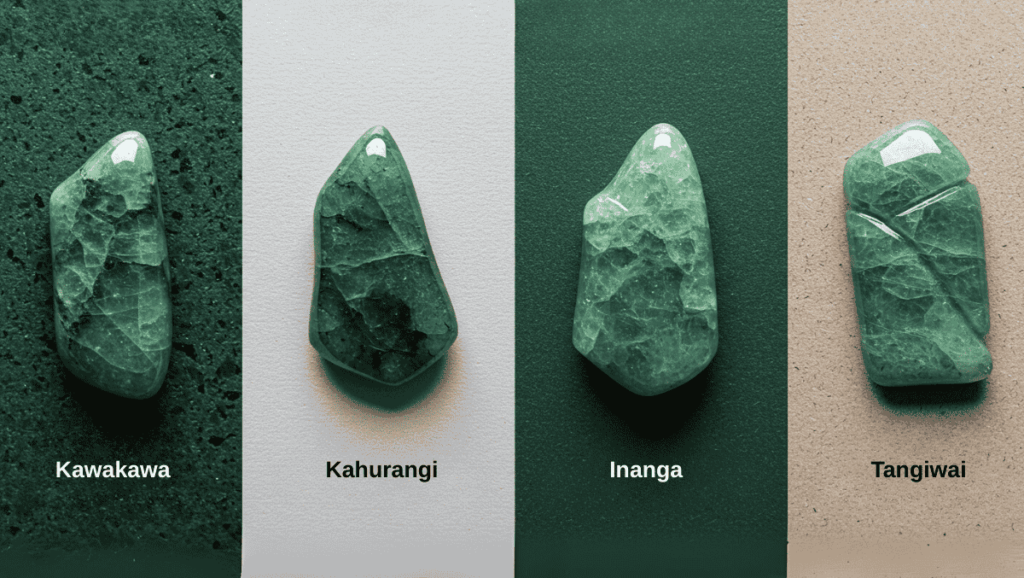
Where Can Pounamu Be Found?
Pounamu is found only in Te Waipounamu (South Island), particularly in rivers and valleys of the West Coast, Fiordland, and Southland. Māori have traditional rights to collect it, and today only those with Ngāi Tahu descent can legally recover Pounamu from natural sources. This law ensures the stone is treated as a sacred treasure, not reduced to a tourist commodity.
The Historical and Cultural of Pounamu in Māori Life
This sacred stone bridges culture and spirit: a mark of authority and a vessel of life force. Much like traditional New Zealand clothing, which symbolizes identity and belonging, Pounamu is deeply tied to Māori customs, leadership, and spirituality.
Symbolism in Leadership, Peace, and Alliances
Historically, Pounamu was one of the most valued materials in Aotearoa. Archaeological evidence shows it was used extensively for adzes, chisels, and weapons.
Yet it was also a mark of prestige: mere Pounamu were so highly regarded that some were given names and treated as tribal treasures. European records from the 18th century describe chiefs presenting Pounamu gifts during diplomatic encounters, underlining its cultural role as a medium of respect and authority.
The Spiritual Dimension of New Zealand Greenstone Pounamu
Ask any Māori elder, and they’ll tell you: Pounamu carries a spirit of its own. It’s believed to hold mauri, the vital essence of life. When someone wears Pounamu — whether it’s a hei-tiki pendant or another carving — the stone becomes part of them, protecting and guiding them. That’s why passing down Pounamu is so powerful: it’s not just giving a stone, it’s handing over part of your whakapapa (genealogy) and spirit to the next generation.
| Aspect | Cultural Value | Spiritual Value |
| Use in life | Tools, weapons, ornaments, gifts | Protective amulets, spiritual renewal |
| Symbol of | Authority, leadership, alliances | Mauri (life force), wairua (spiritual essence) |
| Legacy | Passed down as taonga tuku iho (heirlooms) | Bonds people to ancestors and future generations |
The Traditional and Artistic Uses of Pounamu in Māori Culture
Pounamu has long been treasured by Māori not only as a practical resource but also as a cultural and artistic treasure. Its uses can be grouped into three main areas:
1. Tools and Symbols of Authority
- Mere (short clubs): Crafted from pounamu, mere symbolized leadership, prestige, and mana.
- Utility tools: Strong and durable, pounamu was shaped into chisels and adzes for carving and building.
2. Pounamu Jewellery and Adornments
- Hei-tiki pendants: Among the most iconic forms of pounamu jewellery, symbolizing ancestry, fertility, and spiritual protection.
- Pounamu earrings & pounamu necklaces: Worn as both personal adornments and spiritual symbols, often gifted to mark important milestones or family ties.
- Other designs (hei matau, koru): Represent safe travel, new beginnings, and harmony.
3. Ceremonial and Artistic Creations
- Taonga tuku iho (heirlooms): Passed down generations, carrying family mana and stories.
- Gifts of peace: Pounamu was exchanged to strengthen alliances and resolve disputes.
- Carving artistry: From traditional motifs to modern designs, carvers continue to transform raw stone into timeless pounamu jewellery and artworks.
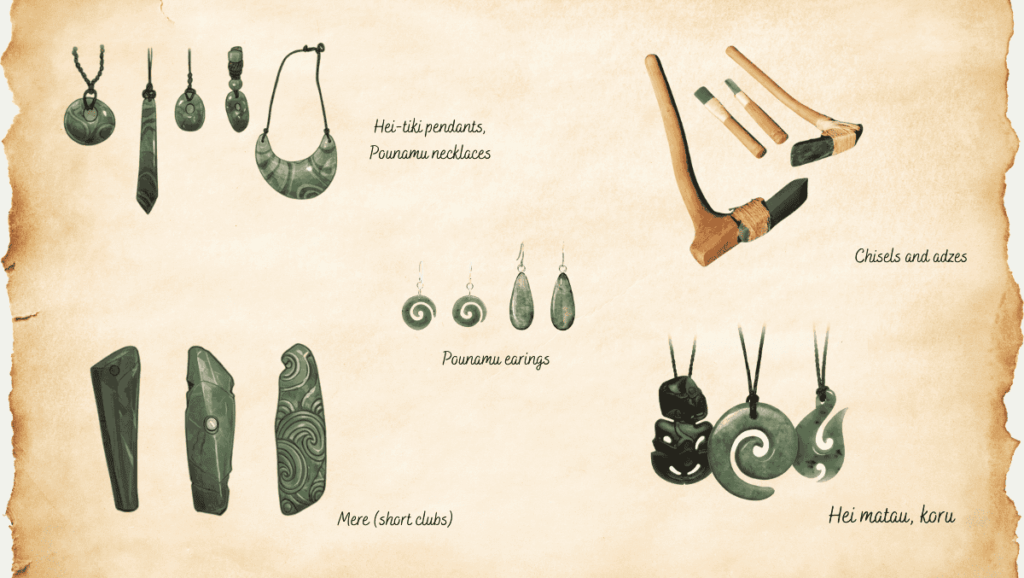
Pounamu in Today’s Life and Future Generations
For visitors to New Zealand, encountering pounamu is often one of the most memorable cultural experiences. This greenstone is not only admired for its beauty but also respected for its spiritual depth and connection to Māori heritage. Today, pounamu jewellery has become one of the most meaningful ways for both locals and tourists to engage with this taonga.
The most popular forms of pounamu adornments include:
- Pounamu necklaces (hei-tiki, hei matau, koru): Among the most iconic, often carved as hei-tiki (ancestral symbols) or hei matau (fishhooks symbolizing safe journeys). Many travelers choose these as lasting reminders of their time in Aotearoa.
- Pounamu earrings: Sleek and elegant, they combine traditional designs with contemporary styles, making them popular souvenirs as well as daily wear.
- Pendants and other jewellery: Pounamu is often exchanged to mark important life events, and for visitors, gifting a piece back home carries the spirit of New Zealand’s culture and landscapes.
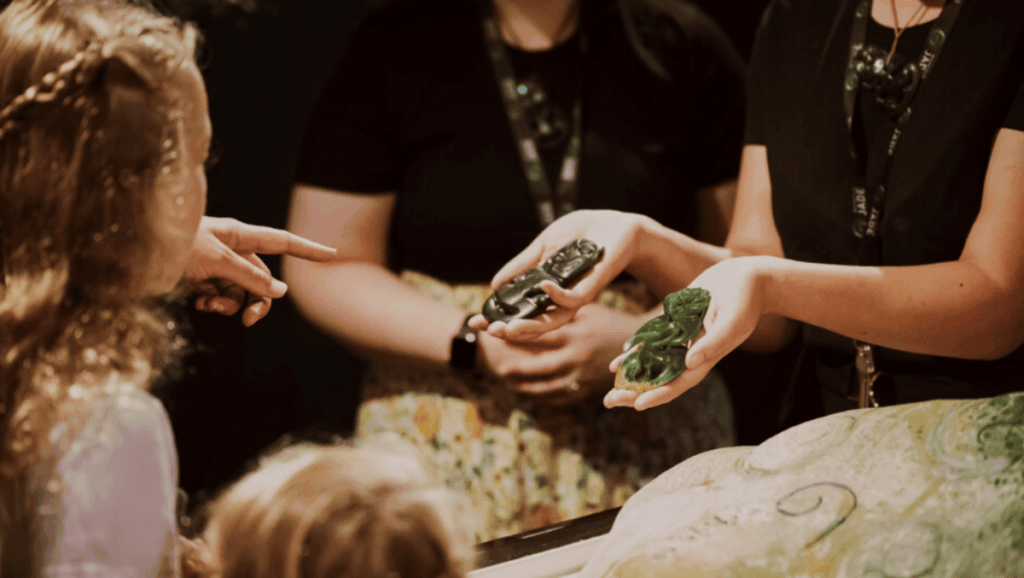
What makes buying pounamu unique in New Zealand is the care given to its authenticity. The stone is carefully managed by Ngāi Tahu iwi, ensuring sustainable sourcing and genuine craftsmanship. Many galleries and carving studios let travelers meet artisans directly, deepening their understanding of the cultural meaning behind each piece.
Looking forward, these practices ensure that pounamu remains more than just a souvenir. It is a living treasure that supports local Māori communities, preserves traditional carving knowledge, and continues to connect people across cultures and generations.
Ready to bring a piece of New Zealand home? Explore our Pounamu Collection or browse other unique souvenirs that celebrate Aotearoa’s rich culture.
Conclusion
Pounamu is not just a treasure of the past; it continues to shape identity, art, and spirituality in modern New Zealand. As a Māori pounamu, it carries stories of ancestry, resilience, and protection that remain deeply valued today.
If you are visiting New Zealand, take the chance to experience pounamu for yourself — explore its history, see the artistry of local carvers, or wear a piece of jewellery that honors both tradition and nature. Above all, remember to respect the cultural meaning behind this taonga and the people who safeguard it.
FAQs
What does wearing a pounamu mean?
Wearing pounamu symbolizes protection, connection to ancestry, and respect for Māori culture. It is often seen as carrying the stone’s spiritual essence (mauri).
Can I wear pounamu if I am not Māori?
Yes, anyone can wear pounamu, but it should be done with respect for its cultural and spiritual meaning in Māori tradition.
Why can’t you purchase your own pounamu?
Traditionally, pounamu should be gifted, not bought for oneself, as receiving it symbolizes respect, love, or connection from another person.
Is pounamu the same as jade?
Pounamu is a type of nephrite jade found only in New Zealand. While similar to jade elsewhere, it holds unique cultural and spiritual importance to the Māori.

I am a cultural historian and editor with over 10 years of research into pre-contact Polynesian history, the Lapita migration, and oral traditions. Share the excitement of my latest publications.
My contact:
Email: [email protected]
Tel: +64 21 456 7890

